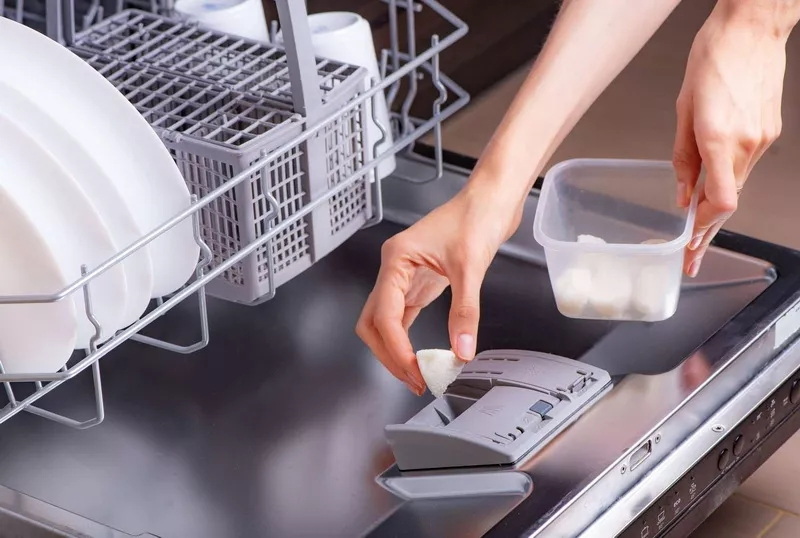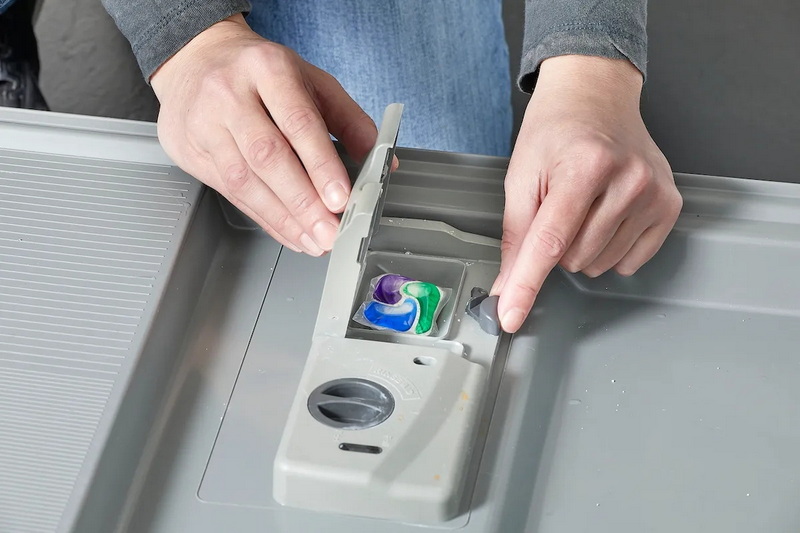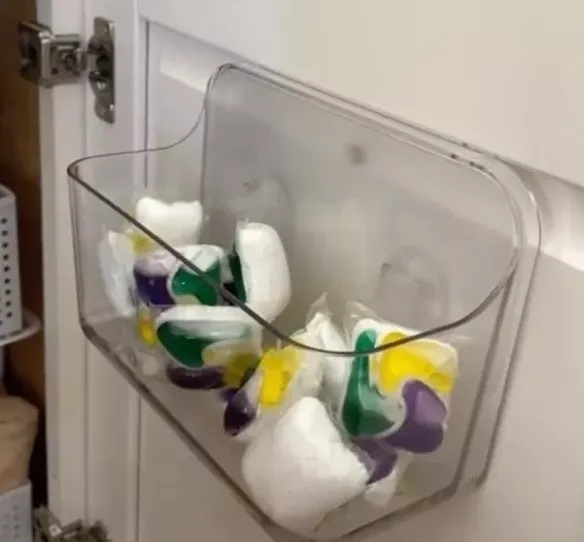Dongguan UFine Daily Chemical Co.,Ltd.
- All
- Product Name
- Product Keyword
- Product Model
- Product Summary
- Product Description
- Multi Field Search
Views: 222 Author: Tomorrow Publish Time: 10-26-2025 Origin: Site











Content Menu
● Understanding Dishwasher Pods
● Common Causes of Non-Dissolution
>> Contaminated or Inadequate Water Supply
>> Detergent Film or Residue Buildup
>> Water Chemistry and Hardness
>> Incorrect Cycle or Settings
>> (2) Check water temperature
>> (3) Evaluate cycle selection
>> (4) Examine loading pattern
>> (5) Inspect water inlet and filters
>> (8) Review maintenance history
>> (9) Evaluate dispenser design compatibility
>> (10) Temperature stratification check
● Solutions and Best Practices
>> Optimize Temperature and Cycle Selection
>> Regular Maintenance Routine
>> Industry Variations and Considerations
● FAQ
>> Q1. What should be the ideal wash temperature for pod dissolution?
>> Q2. Why is my pod dissolving slowly even on a normal cycle?
>> Q3. Can hard water cause pods not to dissolve?
>> Q4. Should I rinse dishes before loading to improve pod performance?
>> Q5. What if I suspect a defective pod batch?
Dishwasher pods are designed to deliver pre-measured amounts of detergent directly into the wash cycle. When a pod fails to dissolve, it can leave residue on dishes, cause ineffective cleaning, and create frustration for the user. Understanding the common causes and practical solutions can help restore optimal performance and prevent future issues. This article examines potential reasons for non-dissolution, diagnostic steps, maintenance tips, and best practices for using dishwasher pods effectively. The aim is to provide a thorough, actionable guide that helps readers pinpoint problems and implement sustainable fixes.

Dishwasher pods are multi-layered delivery systems containing detergents, enzymes, rinse aids, and sometimes infused additives. They are engineered to dissolve at specific water temperatures and mechanical agitation. Pods differ from liquid and tablet detergents in their dissolution dynamics. The outer film is designed to break under agitation and moisture, releasing contents into the wash. Several factors influence dissolution: water temperature, water hardness, cycle selection, loading patterns, and the age and storage of pods.
Many pods require a minimum wash water temperature to dissolve properly. If the dishwasher is running a cold or eco-friendly cycle with low maximum temperature, the pod may not dissolve completely. Some efficient cycles prioritize energy savings over aggressive cleaning, inadvertently compromising pod dissolution.
Low water levels or restricted water flow can prevent sufficient moisture from reaching the pod. Blockages in filters, spray arms, or inlet valves can reduce water pressure and hinder dissolution. Inadequate rinsing can leave a film that interferes with subsequent cycles and allow residue to accumulate in the dispenser.
If dishes or utensils block the detergent chamber or the pod dispenser, the pod may not be exposed to water promptly. Overloading or placing items in a way that shields the dispenser can cause partial dissolution. Sometimes, placing very small items near the dispenser can also create micro-shadows where water cannot reach effectively.
Pods have a shelf life. Exposure to heat, moisture, or humidity before use can degrade the film or contents, reducing their ability to dissolve. Never store pods in humid places or near heat sources. A batch that has been exposed to moisture can stick together, forming clumps that resist dissolution.
Over time, detergent residue can accumulate in the dispenser or around the door seal, affecting moisture penetration and pod dissolution. Regular cleaning helps maintain proper performance. Hard water minerals can also interact with detergent, forming insoluble compounds that hinder dissolution.
Hard water can affect dissolution dynamics. Some mineral deposits can interact with detergents, forming insoluble residues. In areas with very hard water, more aggressive rinsing or water softening may be beneficial. In some cases, switching to a detergent formulated for hard water can improve performance.
Using cycles with insufficient wash time or shorter default durations may not provide enough contact time for the pod to dissolve. Quick washes, half-loads, or special economy cycles can be problematic for pod dissolution. Some models require an extended rinse to ensure complete dissolution, especially with thicker pods.
Pods should be kept in their original packaging and stored in a cool, dry place. Exposure to humidity or sunlight can compromise integrity and performance. Opening a pod pouch and exposing the contents to air can dry the outer film, affecting dissolution behavior.
Open the detergent compartment and check if the pod is intact or damaged after the cycle. If the pod remains in good condition after a cycle, it may indicate other issues. Look for any signs of film installed in the dispenser that did not rupture, indicating insufficient moisture.
Run a diagnostic cycle and monitor the final rinse temperature. If the maximum temperature is below the recommended range, adjust settings or consult the manufacturer. Use a thermometer in the cycle to verify actual water temperature if your dishwasher lacks a built-in readout.
Ensure you are using a standard or heavy-duty cycle appropriate for the load. Avoid ultra-fast or eco cycles for first troubleshooting attempts. Some machines require a longer wash to ensure proper dissolution of certain pods.
Confirm that the pod dispenser is not obstructed by dishes or utensils. Reorganize the rack to ensure clear access to water and detergent. Pay attention to items placed directly above the dispenser, which can shield it from water.
Clean the sump, filters, and the spray arms to remove food debris and mineral buildup. Check the inlet valve and hose for kinks or blockages. A partially blocked inlet can limit water flow and reduce moisture reaching the pod.
If you suspect hard water, consider a water softener or using a detergent formulated for hard water. Some detergents include built-in water-softening agents. You can also run a cleaning cycle with an acidic cleaner to remove mineral buildup that may affect dissolution.
Try a different brand or a fresh pod to eliminate the possibility of a defective batch. Ensure the pod is stored properly before use. If a new pod dissolves correctly but the old one does not, the issue is likely with the batch.
If the dishwasher is aging, consider service or component replacement (gasket, seals, or pump) that could affect overall performance. Worn seals can cause leaks and impact the water distribution inside the tub.
Some dispenser designs are more prone to residual moisture issues. If your dispenser is old or damaged, replacement components or a service visit may be necessary. In some cases, manufacturers offer updated dispensers designed for newer pods.
In taller dishwashers or those with multiple spray zones, temperature distribution can vary. Ensure the main wash chamber reaches the target temperature uniformly by inspecting heating elements and sensors. Uneven heating can leave pockets of cooler water that fail to dissolve the pod.

- Use cycles that reach the recommended wash temperature for your pods. Typical effective temperatures range from 45°C to 60°C (113°F to 140°F) depending on the product. If your water heater is set too low, raise the temperature gradually and test with a standard load.
- For model-specific guidance, consult the manual to identify cycles that provide sufficient duration and agitation for pod dissolution.
- Ensure the dishwasher has adequate water supply and no leaks. Inspect hoses for kinks and replace damaged lines.
- Clean filters, spray arms, and the sump to remove food debris and mineral buildup. Use a soft brush to dislodge stubborn deposits without scratching components.
- Place dishes to allow water and detergent to reach the dispenser unimpeded.
- Do not block the detergent compartment with large or unusually shaped items.
- Avoid pre-rinsing dishes too aggressively; some residue can hinder dissolution dynamics. If you must pre-rinse, consider a lighter rinse rather than a full wash.
- Consider using a recommended detergent for hard water.
- Install a home water softener if your water hardness is consistently high.
- Run a cleaning cycle monthly to prevent scale buildup that can impede dissolution.
- Store pods in a cool, dry place, away from moisture and heat.
- Keep the original packaging until use to ensure proper storage guidelines are followed.
- Use pods before the printed expiration date for optimal performance. Check packaging for storage warnings.
- Clean the door seal, dispenser, and surrounding area to remove residue.
- Run an empty or lightly loaded cycle with a dishwasher-safe cleaner to remove mineral buildup monthly.
- Inspect seals and gaskets for wear; replace as needed to maintain optimal operation.
- Periodically check the float switch and inlet screen to prevent false readings of water level that could affect dissolution.
Different dishwasher models and brands may have varying dispenser mechanisms and recommended detergent types. Always consult the user manual for model-specific guidance. Some pods are formulated for specific water conditions or loads; selecting the correct product for your environment can improve results. If persistent non-dissolution occurs across multiple cycles or loads, professional service may be warranted to diagnose potential mechanical faults.
- Combine pods with proper loading and cycle selection to maximize cleaning efficiency.
- Address hard water issues proactively to maintain consistent pod performance.
- Keep a maintenance log noting dates of cleaning, maintenance, and any cycle changes to identify patterns over time.
Non-dissolving dishwasher pods can be caused by temperature issues, water delivery problems, poor loading practices, aging or defective pods, residue buildup, or hard water conditions. By systematically checking water temperature, cycle selection, loading arrangements, dispenser cleanliness, and water quality, you can restore effective pod dissolution and maintain clean, spotless dishes. Regular maintenance and mindful storage of pods will reduce future occurrences and extend the life of your dishwasher's performance.

A1. The ideal wash temperature for most pods is typically between 45°C and 60°C, depending on the product's instructions. Check the label on your specific pod brand for precise guidance.
A2. Slow dissolution can result from low water temperature, limited water flow, or an obstructed detergent dispenser. Inspect the dispenser, ensure adequate water supply, and consider running a hotter or longer cycle.
A3. Yes, hard water can hinder dissolution and contribute to residue buildup. Consider a water-softening solution or a detergent formulated for hard water, and run periodic cleaning cycles.
A4. Rinsing lightly to remove large food particles is fine, but excessive pre-rinsing can reduce the pod's contact with water. It is generally better to load as directed by the manufacturer and avoid pre-rinsing every item.
A5. Try a different brand or a fresh pod from a new batch to verify. If issues persist, contact the manufacturer or retailer for a replacement and check for recalls or batch-specific notices.